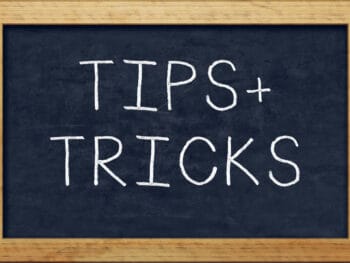CMS recently announced changes regarding the conditional payment recovery process that will impact workers’ compensation attorneys and claim management teams. These changes will be effective October 5, 2015, which will include a new role for the Benefits Coordination & Recovery Center (BCRC). It will also include the use of a new contractor to assist in the process.
Click Link to Access Free PDF Download
“8 ‘Think Outside the Box’ Tactics to Settle Workers’ Comp Claims”
What is Changing?
The change will affect the recovery of conditional payments in Non-Group Health Plan (NGHP) matters. These are considered “applicable plans,” which include the following:
- Liability insurance (including self-insurance);
- No-fault insurance; and
- Workers’ compensation laws or plans.
Ongoing Role of the BCRC
The BCRC will continue to monitor and work with interested parties in the conditional payment recovery process for the following workers’ compensation cases on and after October 5, 2015:
- Cases where the beneficiary is listed as the debtor;
- Cases with reported Ongoing Responsibility for Medicals (ORM); and
- Cases reported under Section 111 Reporting with conditional payments.
New CMS Contractor: Commercial Repayment Center
The Commercial Repayment Center (CRC) is the new CMS contractor that will assist with a defined category of matters involving the recovery of conditional payments in workers’ compensation cases. It will handle all conditional payments matters not serviced by the Non-Group Health Plan (NGHP). Cases where the NGHP is the listed debtor will coordinate with this contractor.
The new contact information for the Commercial Repayment Center (CRC) is P.O. Box 93965, Cleveland, OH 44101. Their fax number is (216) 583-0228.
Understanding the New Process
Claims management teams and attorneys representing workers’ compensation insurers and self-insured employers need to understand these changes. Failure to follow these new processes can result in unnecessary delay, interest charges on conditional payment matters and referrals to the US Department of Treasury for conditional payment collection actions.
Along with changes in conditional payment recovery contractors, interested stakeholders must also understand the new conditional payment appeals processes that went into effect on April 28, 2015. Under this new system, a ridged appeals process will impact your cases. These revised procedures include the following steps applicable plans must follow in order to challenge conditional payments amounts if informal discussions with CMS prove unsuccessful.
- Initial determination (Demand Letter)
- Redetermination by the contractor issuing Demand Letter
- Reconsideration by a Qualified Independent Contractor
- Hearing before an Administrative Law Judge (ALJ)
- Review by the Departmental Appeals Board’s Medicare Appeals Council
- Judicial review in the United States District Court.
Implementing Best Practices
The advent of the new contractor will also require attorneys and claim management teams to adopt new best practices. This should include from your organization, or your Medicare Secondary Payer service provider:
- Basic education of Medicare Secondary Payer compliance matters and a review of current procedures;
- Understand what cases involving conditional payment recovery will be processed through the Benefits Coordination & Recovery Center (BCRC) and Commercial Repayment Center (CRC). Determine what adjustments need to be made to internal processes.
- Monitor CMS websites for updates related to conditional payment matters. It is expected that additional changes will be announced shortly regarding the multi-factor authentication process and the Medicare Secondary Payer Recovery Portal.
- Take a proactive approach to address Conditional Payments early and allow more time prior to settlement to possibly negotiate any unrelated/disputed charges, as well as to promptly respond to any demand letters.
- Conditional payment requests should be submitted automatically upon receipt of a positive beneficiary query response from CMS. If gaps in treatment exist, the Conditional Payment Letter (CPL) information should be reviewed for lien purposes and negotiated prior to CMS submission.
Coordinate your efforts with a Medicare Secondary Payer service provider that knows and understands these processes.
Author Michael Stack, Principal, COMPClub, Amaxx LLC. He is an expert in workers compensation cost containment systems and helps employers reduce their work comp costs by 20% to 50%. He works as a consultant to large and mid-market clients, is co-author of Your Ultimate Guide To Mastering Workers Comp Costs, a comprehensive step-by-step manual of cost containment strategies based on hands-on field experience, and founder of COMPClub, an exclusive member training program on workers compensation cost containment best practices. Through these platforms he is in the trenches on a monthly basis working together with clients to implement and define best practices, which allows him to continuously be at the forefront of innovation and thought leadership in workers’ compensation cost containment. Contact: mstack@reduceyourworkerscomp.com.
©2015 Amaxx LLC. All rights reserved under International Copyright Law.
Do not use this information without independent verification. All state laws vary. You should consult with your insurance broker, attorney, or qualified professional.













If you were in pain you wouldn’t be wanting this.